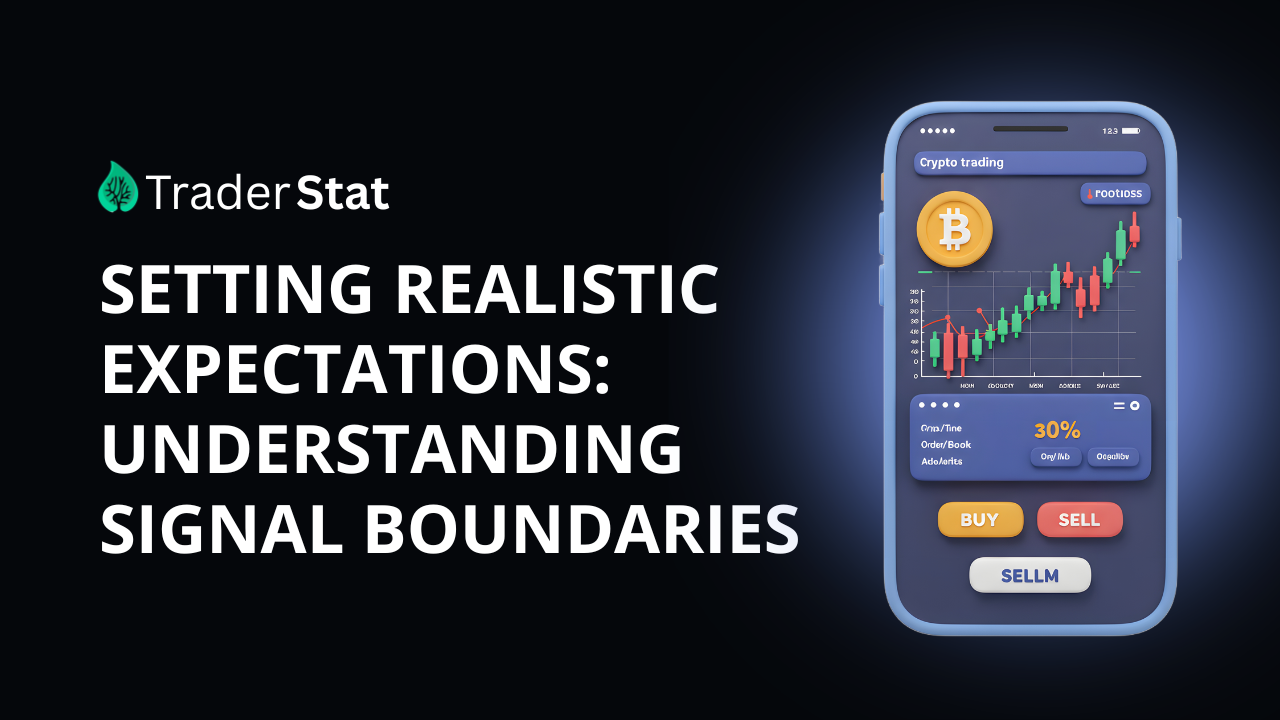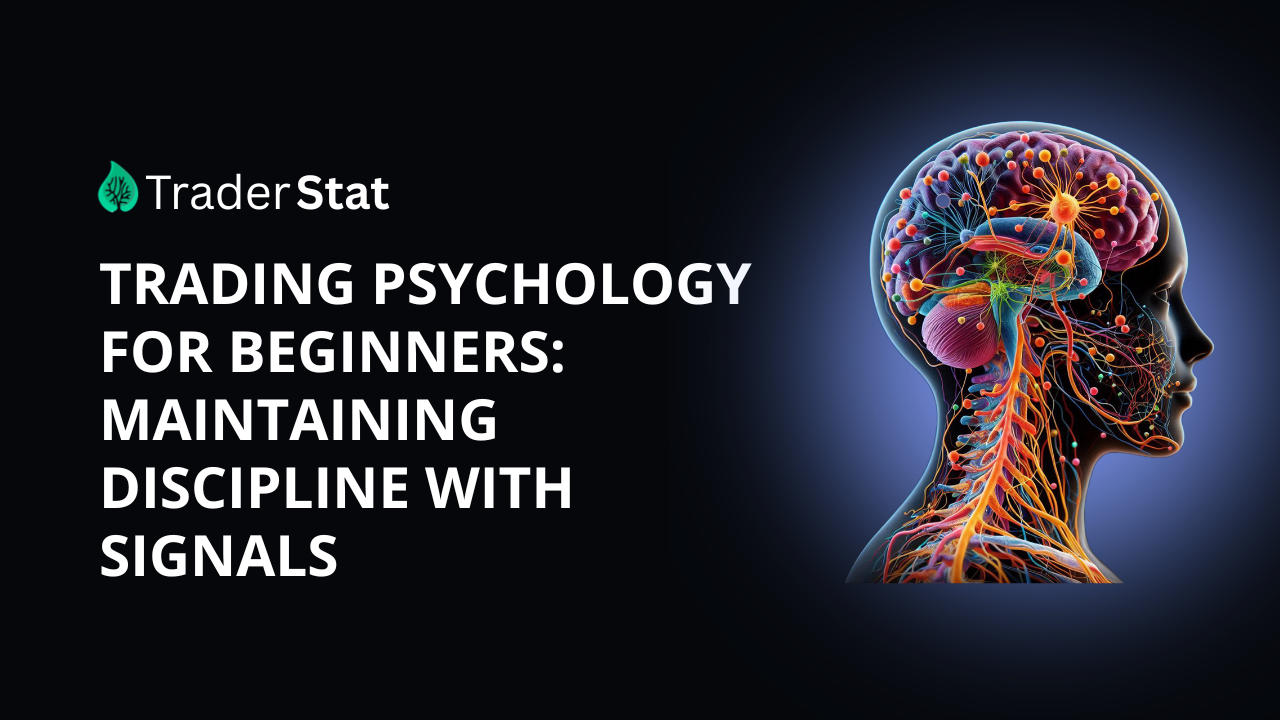
Setting Realistic Expectations: What Signals Can and Cannot Do for You
In the fast-paced world of financial markets, traders are constantly seeking tools and strategies to gain an edge. Trading signals have emerged as a popular resource, promising insights into potential market movements and opportunities. However, like any tool in a trader's arsenal, understanding what signals can realistically accomplish—and where they fall short—is crucial for long-term success. This article explores the true nature of trading signals, helping you set proper expectations that can lead to more effective trading decisions.
The Benefits: What Signals Can Do for You
Filtering the Noise
One of the most significant advantages of trading signals is their ability to cut through market noise. Financial markets generate overwhelming amounts of data and information, making it challenging for individual traders to identify meaningful patterns or opportunities. Well-designed signals distill this complexity into actionable insights, highlighting potential trades that meet specific criteria.
Time Efficiency
For active traders juggling multiple responsibilities, signals offer substantial time savings. Rather than spending hours analyzing charts, economic data, and news events across different markets, traders can review curated signals that have already undergone this analysis process. This efficiency allows traders to focus on execution and risk management rather than exhaustive research.

Emotional Discipline
Trading signals can provide a structured approach that helps mitigate emotional trading decisions. By following predetermined criteria for entries and exits, traders can avoid common psychological pitfalls such as FOMO (fear of missing out), revenge trading after losses, or prematurely exiting profitable positions. This systematic approach can lead to more consistent trading performance over time.
Learning Opportunities
For developing traders, quality signals can serve as educational tools. By studying the reasoning behind signals and monitoring their outcomes, traders can gain deeper insights into market behaviors and effective trading strategies. This learning process can accelerate the development of independent analytical skills.
The Limitations: What Signals Cannot Do for You
Guarantee Profits
Perhaps the most crucial limitation to understand is that no trading signal—regardless of its source or methodology—can guarantee profits. Markets are inherently unpredictable, influenced by countless variables that no signal provider can fully account for. Even signals with historically high success rates will experience losing streaks.
Replace Personal Judgment
Signals cannot replace the need for personal judgment and critical thinking. While they provide suggestions, the ultimate decision to execute trades remains with the trader. Without personal assessment of risk tolerance, market conditions, and portfolio context, blindly following signals can lead to inappropriate trading decisions.
Account for Individual Circumstances
Trading signals typically cannot account for individual financial situations, risk preferences, or trading objectives. A signal that might be perfect for one trader could be entirely unsuitable for another based on capital availability, tax implications, or risk capacity.

Adapt to Rapid Market Changes
Markets can shift dramatically in response to unexpected news or events. Many signal systems cannot adjust instantly to these changes, potentially leading to recommendations based on outdated conditions. This lag is particularly problematic during high-volatility periods when market conditions can transform within minutes.
Compensate for Poor Execution
Even the best signal cannot overcome poor trade execution. Issues such as slippage, delays, technical problems with trading platforms, or improper position sizing can significantly impact results. A profitable signal can still result in a losing trade if execution is flawed.
Setting Realistic Expectations
View Signals as Tools, Not Solutions
The healthiest approach to trading signals is viewing them as one tool within a comprehensive trading system—not as a complete solution. Just as a carpenter wouldn't rely solely on a hammer to build a house, traders shouldn't depend exclusively on signals for trading success.
Evaluate Signal Sources Critically
Not all signal providers are created equal. Before following any source, research their methodology, historical performance (including losing periods), transparency about risks, and alignment with your trading style. Be particularly wary of providers promising extraordinary returns with minimal risk.
Start with Paper Trading
When testing new signal sources, consider paper trading (simulated trading without real money) first. This approach allows you to evaluate the signal's performance and your ability to implement it correctly without financial risk. Only transition to live trading after demonstrating consistent success in simulation.

Develop Personal Validation Techniques
Even when using trusted signals, develop your own validation process. This might include checking that the signal aligns with broader market trends, confirming the setup with your preferred technical indicators, or ensuring the fundamental outlook supports the suggested trade.
Maintain Realistic Success Metrics
Rather than expecting every signal to generate profits, focus on long-term success rates and risk-adjusted returns. Even the most successful traders and signal providers typically achieve success rates of 50-60%, with profitability coming from managing position sizes and ensuring winning trades outweigh losing ones.
Integrating Signals into Your Trading Approach
The most effective use of trading signals involves thoughtful integration into your broader trading methodology:
- Define your strategy first: Understand your own trading objectives, timeframes, and risk tolerance before seeking signals that complement these parameters.
- Use signals for confirmation: Rather than trading solely based on signals, use them to confirm opportunities you've identified through your own analysis.
- Diversify signal sources: Consider using multiple signal providers or methodologies to avoid over-reliance on a single approach that may underperform in certain market conditions.
- Track performance rigorously: Maintain detailed records of signal performance, noting not just win/loss ratios but also performance across different market environments.
- Evolve your approach: As your trading skills develop, you may find yourself relying less on external signals and more on your own analysis—this evolution is a natural part of trading growth.

Conclusion
Trading signals can be valuable assets in a trader's toolkit when approached with appropriate expectations and integrated thoughtfully into a comprehensive trading strategy. Their greatest value lies not in promising trading success but in providing additional perspectives and potential opportunities that traders can evaluate against their own analysis and objectives.
By understanding both the capabilities and limitations of trading signals, you can harness their benefits while avoiding the pitfalls of over-reliance or unrealistic expectations. Remember that successful trading ultimately comes from a combination of tools, knowledge, discipline, and experience—signals can contribute to this mix, but they cannot replace the trader's responsibility for their own decisions and outcomes. In the end, the most successful signal users are those who recognize that signals represent the beginning of the trading process, not the end—a starting point for analysis rather than a substitute for it.

